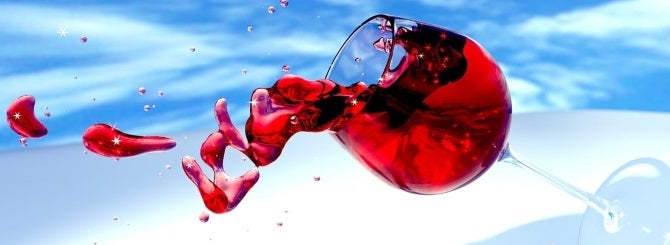The good news for the US wine market is that the worst might just be over.

© MasterTux/Pixabay | The US wine industry’s recent decline could be over, according to one industry analyst.
“Well I’ve been down so very damn long/that it looks like up to me.” – The Doors.
Here is what passes for good wine industry news these days: one of the industry’s leading analysts believes wine “may have hit bottom”.
“Hopefully it will start to move upward, but I can’t say how fast it will happen,” said Jon Moramarco, partner/editor of the Gomberg Fredrikson Report.
You might need a magnifying glass to find all the good news in Moramarco’s quarterly webinar Wednesday, but there are signs of life in wine and spirits – and interesting political implications of that news.
First, while overall shipments of wine from producers and importers to retailers were down 4.1 percent in 2024, imported wines in a bottle – not bulk wines – were up 3.7 percent. Imported sparkling wines (mostly Prosecco) were up 9.7 percent. This is good news! And because we’re talking about 2024, it includes no pre-tariff stocking up.
However, shipments of domestic still wines were down 7.5 percent, and domestic sparkling wines were down 11.3 percent. This won’t make me popular, but it is hard to look at those numbers and not see why some California grape growers support tariffs on imported wine.
“While the current administration is favorable toward addressing blatant trade imbalances, our California grape and wine producers need to be vocal and active in pushing for tariffs and other protectionist trade policy,” Jeff Bitter, president of Allied Grape Growers, told Wine-Searcher. “Tariffs are not bad for the California wine industry, as the industry media often portrays. Tariffs, when implemented methodically and in a targeted manner, serve to level the playing field and encourage the purchase of domestic product.”
Similarly, shipments of imported beer were up 3.9 percent in 2024 while shipments of domestic beer were down 3.4 percent. But, Moramarco said that trend is already reversing in 2025.
“Mexican beer has slowed down for a number of reasons: tariffs, but also concerns about immigration,” Moramarco said.
Moramarco does not believe beer will have a good year in 2025, but he is optimistic about wine. First, he said California producers started to turn it around late last year.
“We probably hit bottom in the thirrd quarter of 2024 for California wine shipments,” Moramarco said. Though California wine shipments are down 16 percent from where they were before the pandemic, “possibly the sky is not falling and we’ve started to see some recovery for California wine”.
Spirited response
The situation is complicated for spirits producers. Moramarco said most of the good numbers put up by the spirits industry are driven by booming sales of Ready to Drink (RTD) cocktails. The overall spirits market was up 4.7 percent in 2024, but removing RTDs and Tequila – the hottest of spirits in the US – shows everything else down 1.3 percent. Tequila was up 6.4 percent in 2024 and now sells nearly double all imported whiskey (Scotch, Irish, Indian, etc.) combined.
Moramarco said American whiskey producers overestimated the whiskey boom pre-pandemic. Domestic whiskey shipments were down 4.3 percent last year and are back to the pre-pandemic level. This means there’s a lot of whiskey in US warehouses aging longer than expected.
“Pre-pandemic whiskey producers were sitting on five years. Today they’re sitting on almost 10 years of inventory,” Moramarco said.
If you are a whiskey drinker, this may not be good news for the industry, but it’s good news for us. Unlike, say, Pinot Grigio, which has to be sold or distilled into hand sanitizer, that whiskey is just getting better.
Here’s some more good news. Remember all the panic from a decade ago about how Millennials weren’t adopting wine? They’re older now and they’re drinking more than Gen X did at the same age. In fact, people aged 30 to 34 drank 5.45 servings of alcohol per week from 2019 to 2023, second-most of any age group behind the aforesaid Gen X (ages 50 to 64), who drank 5.61 servings per week.
The big dropoff in drinking has come from Gen Z, especially young adults just hitting age 21. From 2004 to 2008 this age group drank 7.63 servings per week; the current crop of adults in the same age group drinks more than one-third less. At just 5.03 servings per week, 21-23 year olds drink less than any other group of adults. These are not the college days most of us remember.
Moramarco highlighted a list of the Top 100 Restaurants in Northern California as chosen by the San Francisco Chronicle. While two decades ago (when yours truly worked for that newspaper), the list was heavy on fine-dining establishments with long wine lists, the focus now is on more affordable food: ramen, tacos, etc. Of this year’s choices, 21 have no alcohol license, two have beer only, and 46 have beer and wine only. Only 31 of Northern California’s Top 100 restaurants sell beer, wine and cocktails.
“When we look at how consumers are eating today, how do we get wine into every restaurant?” Moramarco said.
There’s a final bit of good news for the industry: though Americans are drinking less, they are spending just as much on alcohol as before.
This may be partly because of price increases, because lower-priced wines are struggling while Moramarco says “higher-priced wines have flattened out post-pandemic”.
However, he reminded his audience of mostly people who want to see wine moved by the truckload: “Boxes are important, but at the end of the day, we put dollars in the bank. At the end of the day, we’re still seeing consumers spend more.”
To join the conversation, comment on our social media channels.
